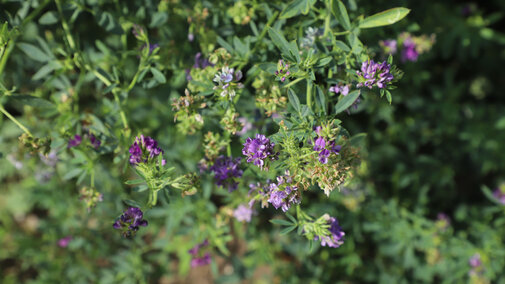Forage Outlook
Looking back at last year’s forage management and production can help us learn what to improve to make it better this year. Stick around and I'll give you some ideas to consider.
Some of you may have planted a winter annual forage to graze this spring. If so, manage grazing so there is not the temptation to begin grazing perennial grass pastures too early this spring. This will help give them some additional rest and early forage production. You might also consider frost-seeding legumes, such as red clover, in February through mid-March to boost the yield and improve the quality without adding additional nitrogen fertilizer.
When did your pastures run out? Was it mid-summer? Late summer? Fall? Remember that you have plenty of annual forage options to fill any gaps — there are few common ones that can be very productive. Forages like sudangrass and pearl millet can be planted from June until September and used to fill summer and fall forage gaps. Oats and turnip mixtures can be planted as early as mid-August and used to fill late-fall forage gaps.
Plant and use these annual forages when your other pastures have slow growth and are stressed so you have plenty of grazing for your cattle. Your regular pastures will bounce back quicker as well.
Several of you may have taken an extra cutting of alfalfa late in the fall because of excellent September and October growth. That hay was high quality, so it should be sold for a premium price or used for special feeding situations. This coming spring, though, it may start to grow a little slower. If so, let it begin to bloom before cutting.
We all can do better this year than we did last year. One of the best ways to accomplish this is to look back to learn what we hope to do better in the future. Have a Happy New Year!
Alfalfa Fertility Management
Successful alfalfa production begins with proper decisions regarding cultivar selection, weeds, insects and disease control, water management and a good fertility program. Although some growers may still use three tons per acre as their alfalfa yield goal, many producers (especially irrigators) may now be using six or nine tons per acre for their target yield goals.
Due to high fertilizer prices, soil testing will likely improve fertilizer return on investments for the upcoming growing season. Since alfalfa roots absorb most nutrients such as phosphate and potassium from the top six to eight inches of soil, surface and shallow subsoil soil sampling will likely provide adequate nutrient availability assessment.
Alfalfa is more sensitive to pH than other crops and grows best at 6.8 soil pH with a pH range from 6.5 to 7.5. If alfalfa fields have low pH or strong acid content, then lime may be required used to raise pH. Conversely, if lab results indicate high pH levels, then sulfur can be applied to help lower pH levels.
Alfalfa hay harvest removes about 55 pounds of potassium per ton of production. Potassium is also needed by alfalfa in high quantities and about one-third of Nebraska fields now test low for potassium. Phosphorus removal in alfalfa forage averages 12 pounds per ton of production, while sulfur and magnesium removal is about 5-6 pounds per ton of alfalfa produced.
To extend fertilizer investment dollars, consider topdressing nutrients immediately after forage harvest before regrowth resumes. Split apply fertilizer applications with topdress fertilization following first cutting and in early September to increase winter hardiness.

